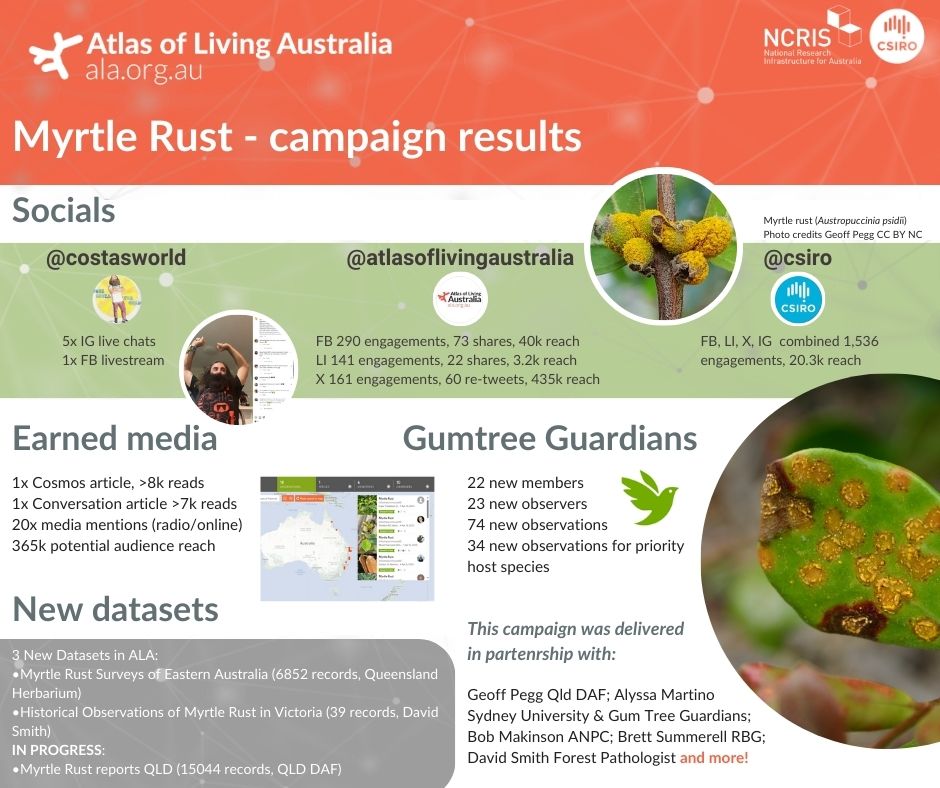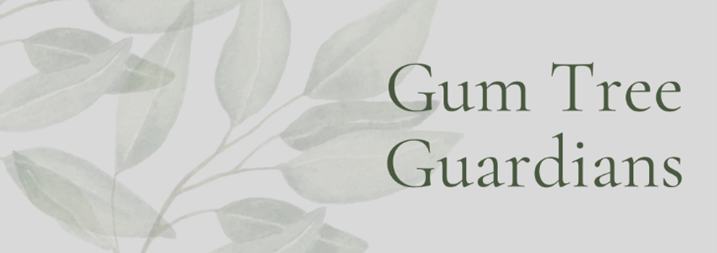Exotic species are reaching Australian shores at unprecedented rates, due to increased human movement and trade. Each introduction of an invasive species poses a potential threat to Australia’s unique biodiversity and ecological communities. Invasive species monitoring is therefore essential to understanding their spread, range and abundance in Australia.
The Atlas of Living Australia’s (ALA) Biosecurity Hub is a one-stop-shop for biosecurity records, projects and information. The ALA currently holds information on more than 2,383 exotic species and 1.9 million occurrences of pests, weeds, and diseases. Although this information has helped to inform current biosecurity responses, continuous data collection is required to create the most detailed picture of Australia’s invasive species landscape.
Citizen scientists play a crucial role in invasive species monitoring by reporting observations at a local level. These reports help to inform early detection and long-term management of biosecurity threats. The ALA works with more than 850 data partners to aggregate native and invasive records, making this information easily accessible through open data. As an example, the ALA has a weekly data integration feed with the citizen science platform iNaturalist, enabling rapid discovery of recent citizen science data, as well as supporting data users and providers such as the Australian Network for Plant Conservation and the Gum Tree Guardians through facilitating open access to aggregated biodiversity records.
One threat among many: The invasive myrtle rust fungus
If you’ve visited the east coast of Australia in spring or autumn since 2010, you may have noticed plants developing bright yellow spores due to myrtle rust infection. Myrtle rust is an invasive fungus that infects plants in the Myrtaceae family, including more than 1,500 species of Australian native trees and shrubs such as tea trees, bottlebrushes, paperbarks, and lily-pillies. Non-native Myrtaceae, which are often grown in gardens or urban forests, are also affected and contribute to the spread of myrtle rust.
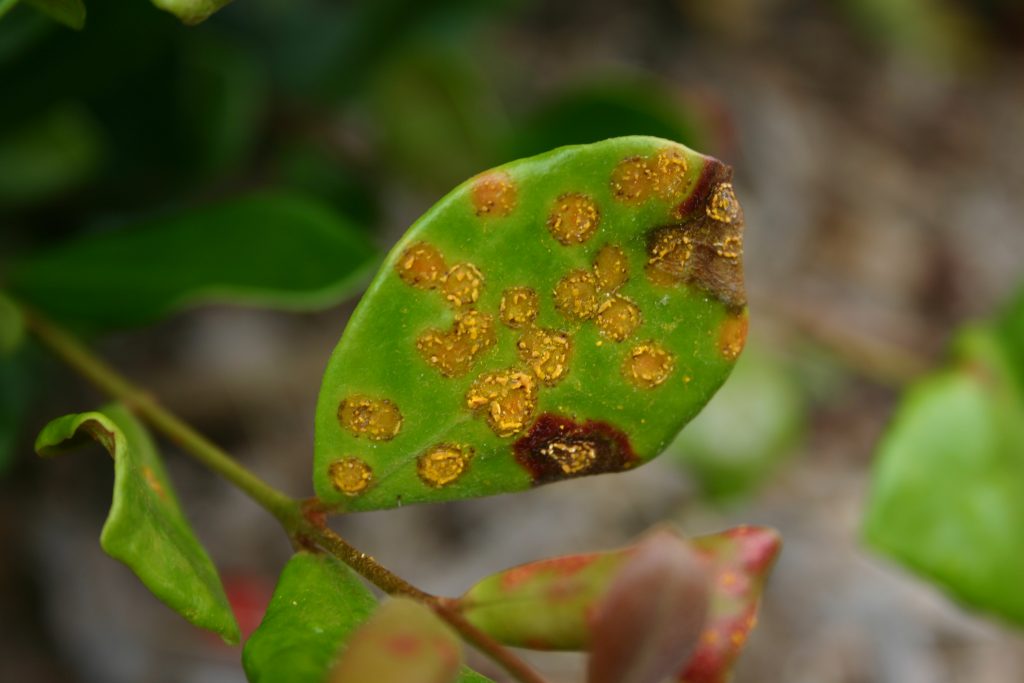
In the short time since its introduction, myrtle rust has had devastating impacts on plant communities. Senior Principal Forest Pathologist Dr Geoff Pegg at Queensland Department of Agriculture and Fisheries has said that since myrtle rust was first detected in Australia, it has been a significant contributor to the decline in some of our most iconic native trees like the native guava and scrub turpentine, which were previously common across Queensland and New South Wales.
“People often think that biosecurity starts and stops at the border, but what happens post-border is just as important. Managing these threats in native ecosystems is challenging. I’ve seen first-hand the devastating effects that invasive diseases like myrtle rust have on our biodiversity. Areas of outstanding natural beauty and ecological significance, such as the Daintree and the United Nations Educational, Scientific and Cultural Organisation (UNESCO) World Heritage Gondwana Rainforests, are now threatened due to the rapid spread of myrtle rust.”
How to spot myrtle rust infection
Myrtle rust affects seedlings, saplings and old established trees. The most distinct symptom of myrtle rust is bright yellow spores on new leaves, stems, flowers, or fruit. Leaves can become deformed and in severe cases, may die and appear scorched. Repeated infections can reduce plant vigour, cause significant defoliation, killing more susceptible trees and preventing flowering and fruiting on others, thereby interfering with reproduction and reducing the food resources for many native animals.
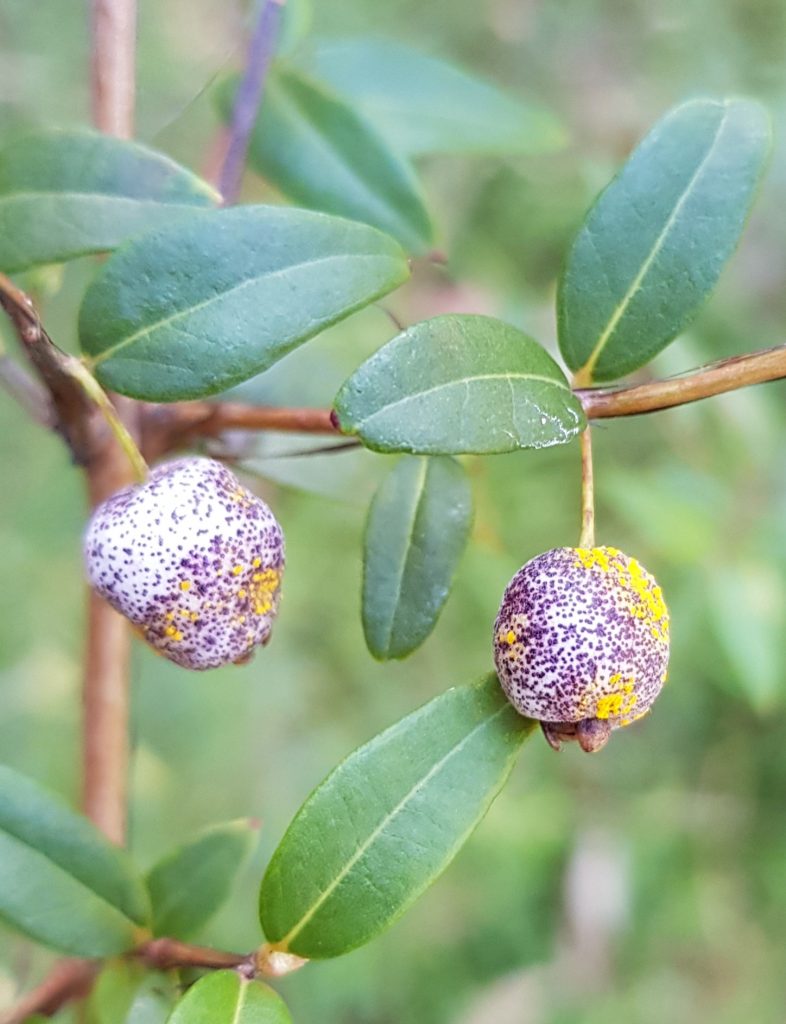
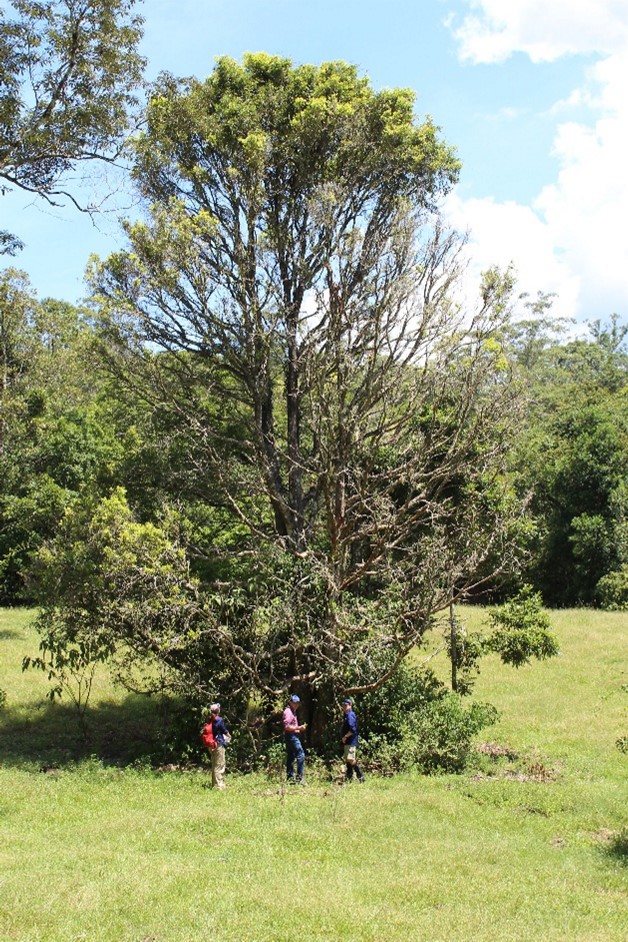
Help provide up-to-date myrtle rust data
To combat the threat of myrtle rust, current data is required to inform researchers, policymakers, landholders and decision-makers about how myrtle rust spreads and impacts different plant communities. Members of the public across Australia can play a vital role by reporting possible myrtle rust infections through citizen science, providing data that helps to protect Australia’s high-risk species. Data from citizen science contributes to a more complete record of the abundance and impacts of invasive species.
Alyssa Martino, a PhD student at the University of Sydney who is studying myrtle rust infection and leads the iNaturalist Gum Tree Guardians project says that,
“People submit myrtle rust reports from their gardens or out in the bush – places that are hard for professional researchers to monitor. When people report these myrtle rust sightings, we get a broader understanding of the extent of the disease which gives us a chance to fight back against the spread.”
The myrtle rust data from citizen scientists are then aggregated in the ALA with data collected from other sources, such as professional scientists, industry and government agencies, to be open and accessible data points.
How to report myrtle rust sightings
By collecting myrtle rust data, you’re helping to paint a more detailed picture of Australia’s invasive species.
- Install a citizen science app such as iNaturalist or NatureMapr.
- Use the ALA Myrtle Rust Reporting Guide to help you identify and capture the critical information to report possible myrtle rust sightings.
- Don’t touch! Follow best practices to avoid accidentally spreading pathogens like myrtle rust!
- Check out citizen science projects like the iNaturalist project Gum Tree Guardians to connect with experts and learn more about myrtle rust in Australia.
For more information, visit the ALA Biosecurity Hub or contact us here.
Check out the results from our March campaign below!
